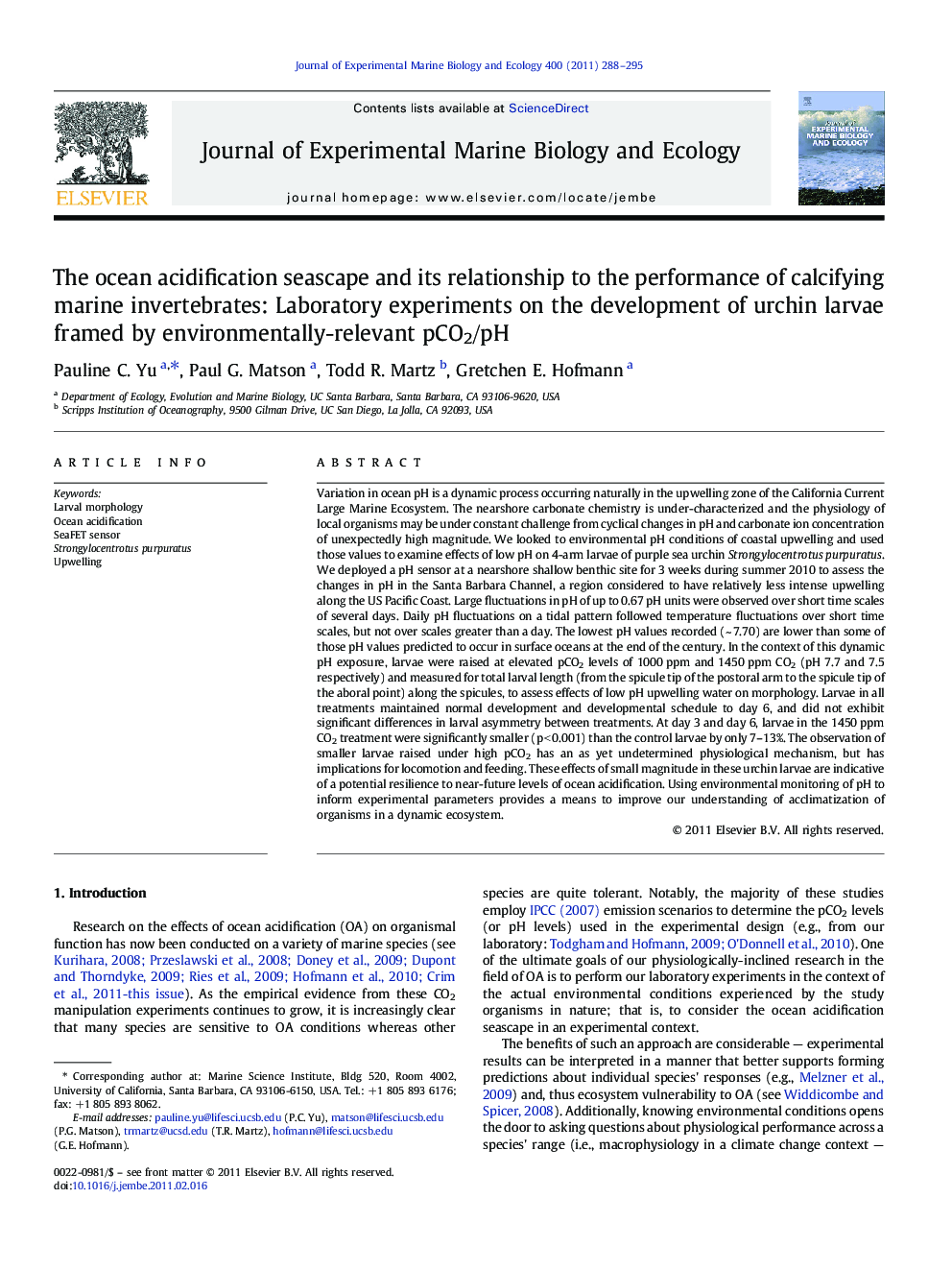| کد مقاله | کد نشریه | سال انتشار | مقاله انگلیسی | نسخه تمام متن |
|---|---|---|---|---|
| 4396358 | 1618463 | 2011 | 8 صفحه PDF | دانلود رایگان |

Variation in ocean pH is a dynamic process occurring naturally in the upwelling zone of the California Current Large Marine Ecosystem. The nearshore carbonate chemistry is under-characterized and the physiology of local organisms may be under constant challenge from cyclical changes in pH and carbonate ion concentration of unexpectedly high magnitude. We looked to environmental pH conditions of coastal upwelling and used those values to examine effects of low pH on 4-arm larvae of purple sea urchin Strongylocentrotus purpuratus. We deployed a pH sensor at a nearshore shallow benthic site for 3 weeks during summer 2010 to assess the changes in pH in the Santa Barbara Channel, a region considered to have relatively less intense upwelling along the US Pacific Coast. Large fluctuations in pH of up to 0.67 pH units were observed over short time scales of several days. Daily pH fluctuations on a tidal pattern followed temperature fluctuations over short time scales, but not over scales greater than a day. The lowest pH values recorded (~ 7.70) are lower than some of those pH values predicted to occur in surface oceans at the end of the century. In the context of this dynamic pH exposure, larvae were raised at elevated pCO2 levels of 1000 ppm and 1450 ppm CO2 (pH 7.7 and 7.5 respectively) and measured for total larval length (from the spicule tip of the postoral arm to the spicule tip of the aboral point) along the spicules, to assess effects of low pH upwelling water on morphology. Larvae in all treatments maintained normal development and developmental schedule to day 6, and did not exhibit significant differences in larval asymmetry between treatments. At day 3 and day 6, larvae in the 1450 ppm CO2 treatment were significantly smaller (p < 0.001) than the control larvae by only 7–13%. The observation of smaller larvae raised under high pCO2 has an as yet undetermined physiological mechanism, but has implications for locomotion and feeding. These effects of small magnitude in these urchin larvae are indicative of a potential resilience to near-future levels of ocean acidification. Using environmental monitoring of pH to inform experimental parameters provides a means to improve our understanding of acclimatization of organisms in a dynamic ecosystem.
Research Highlights
► Measured environmental pH variation can inform ecophysiological studies.
► Calcified organisms in upwelling centers are exposed to naturally low pH.
► The Santa Barbara Channel coastal pH varies from 7.7–8.2 over short time scales.
► Sea urchin larvae develop normally at pH 7.5, but are significantly smaller.
► Future acidification will expose these organisms to even lower pH waters.
Journal: Journal of Experimental Marine Biology and Ecology - Volume 400, Issues 1–2, 30 April 2011, Pages 288–295